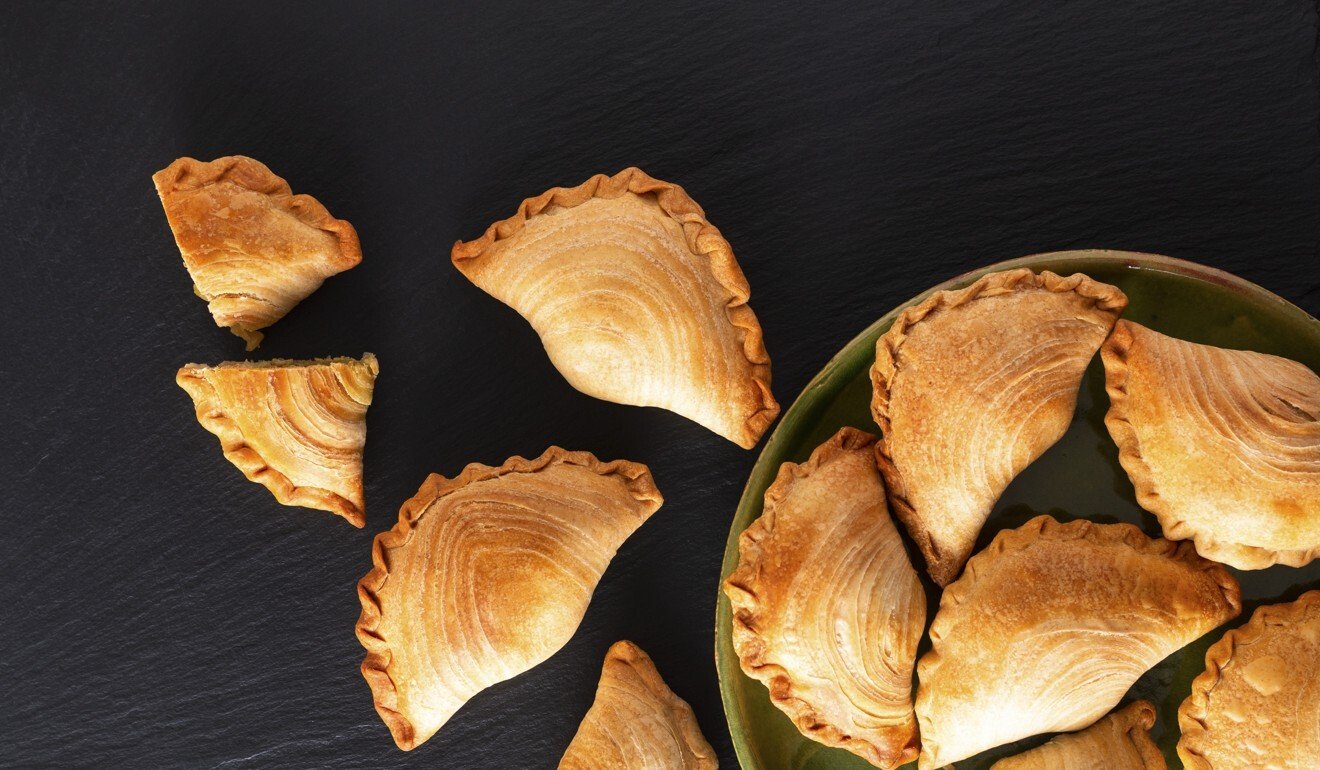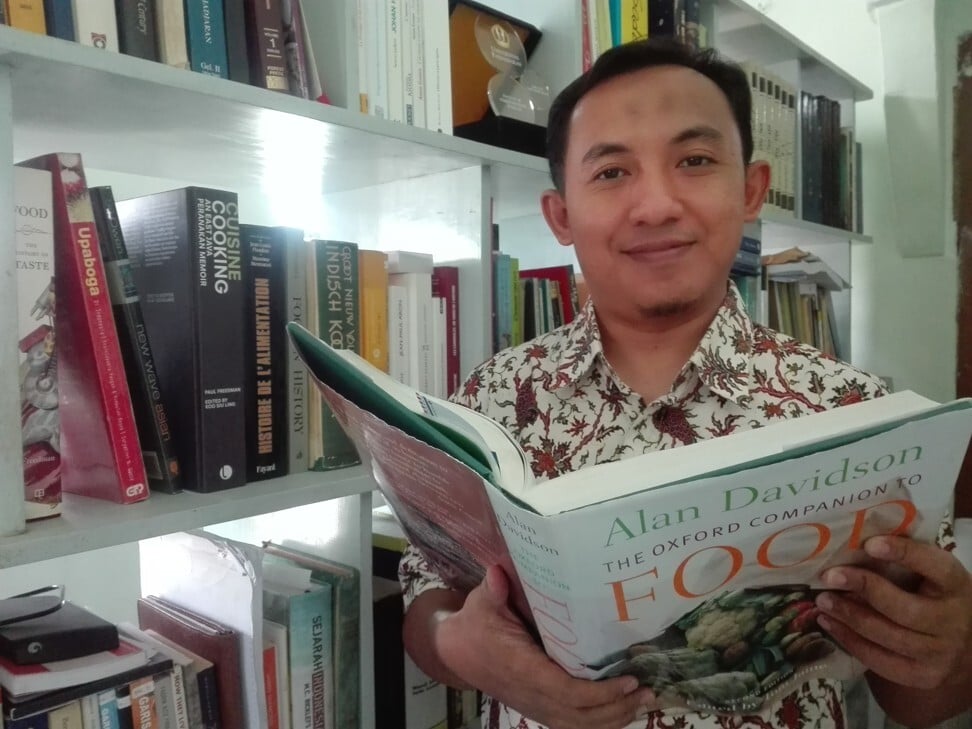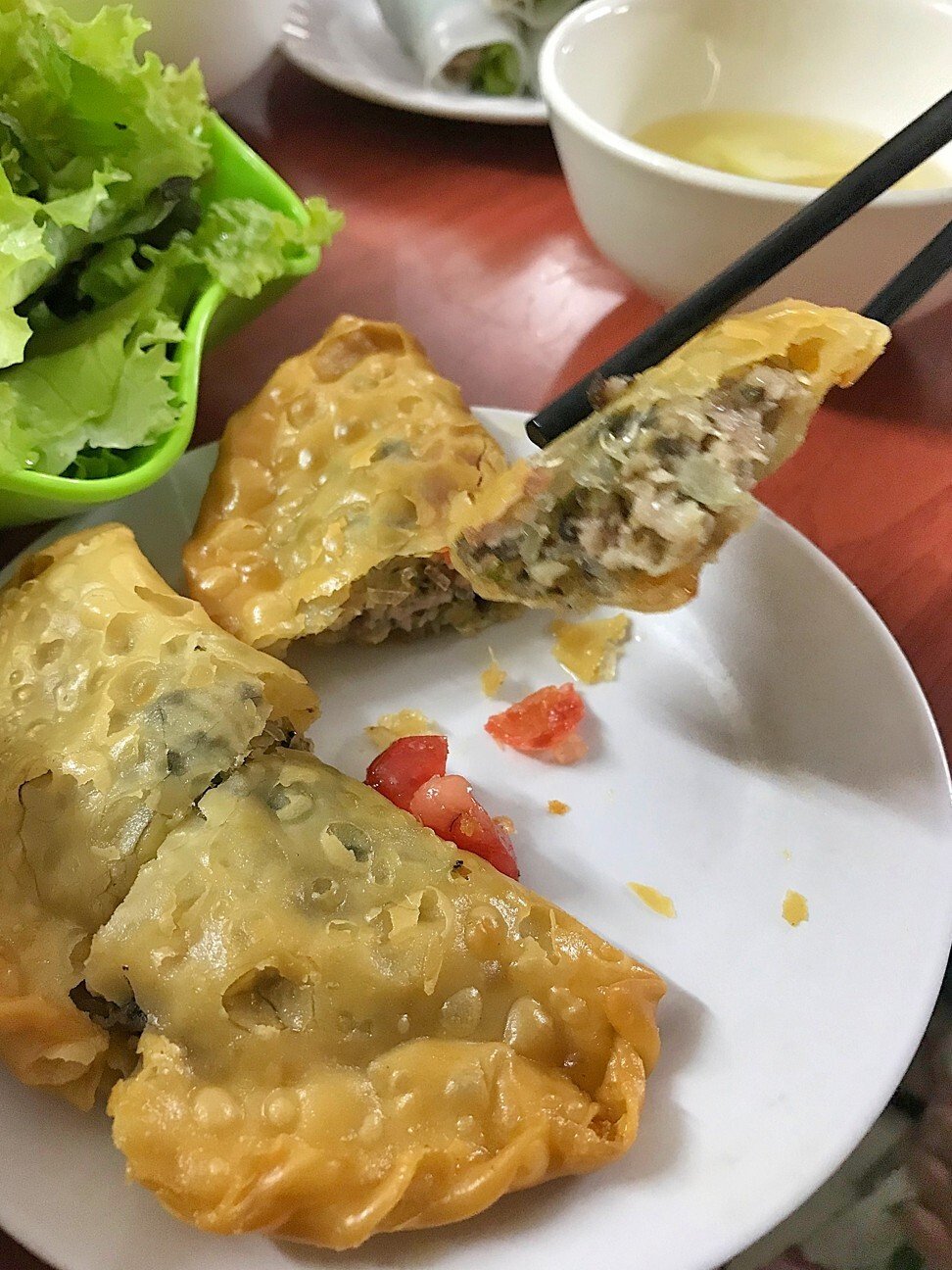
Curry puffs: how a Portuguese snack arrived in Southeast Asia in the 1500s and became a hit across the region
- Portuguese spice traders introduced the empada – a kind of pie – to Southeast Asia in the 1500s
- It spread along the trading routes, and most countries in the region now have their own version, with names like karipap, epok-epok, pastel, panada and banh xep
Sweet or savoury, enjoyed as appetisers or snacks, tiny puffs with a variety of fillings are a delicacy across Southeast Asia. From Malaysia and Singapore to Indonesia, Thailand and Vietnam, various types of puff are based on a popular colonial import.
Curry puffs – called epok-epok and karipap in Singapore and Malaysia and a street-food staple – comprise curried potato, chicken and other ingredients stuffed in fried or baked pastry.
British colonialists in Asia came up with the name “curry puff”, but the dough pockets have been influenced by the colonial cuisines of several European nations down the centuries.
The puff’s most important ancestor is the Portuguese empada, a meat, fish or vegetable pie.

Portuguese traders and adventurers were the first Europeans to begin colonising Asia in the early 1500s, building settlements to control the lucrative spice trade in Goa, India, Malacca in Malaya, and Macau near Hong Kong. They indirectly influenced the eating habits of other Asian countries trading with Portuguese colonies. Travelling on various trade routes, the puff became a trans-Asian snack.
“There were smaller Portuguese settlements, not colonies, in port cities all along the Asian trading routes, as far east as Japan,” says food historian Janet Boileau, an expert on Portuguese-Asian cuisine and culture. “So you find most influence in the former colonies, but it spread from there to the other places along the trading routes. It is fair to say the curry puff is a symbol and heritage of the Portuguese presence in Asia.”
Why traditional Macanese recipes are disappearing
In her doctoral paper “A Culinary History of the Portuguese Eurasians: the origins of Luso-Asian cuisine in the 16th and 17th centuries”, Boileau explores the heritage of the Portuguese-Asian community after the fall of Portugal’s empire, and how its members preserved a culinary legacy in many Asian countries.
Epok-epok and similar turnovers, called pastel in Indonesia, empadas in Macau and empadinhas in Goa, are likely all descendants of the Iberian empada. The latter is also the name of a Macanese dish traditionally served in Macau at Christmas. It’s an exotic, slightly sweet fish pie in a rich pastry crust that would not be out of place at a medieval Portuguese banquet, Boileau points out.
When the Portuguese were supplanted in Asia by the Dutch and English, curry puffs evolved, taking on elements of other European cuisines and with local twists. Asian countries where empadas had taken hold gave birth to their own versions, which survived Dutch rule and mutated during the British colonial era.

“The basic form of the filling encased in dough is the Portuguese model that arrived in the early 1500s, but the empada changed over time as the result of other cultural influences,” Boileau says. “British influence is much later, in the 19th and 20th centuries, and this is likely when the change to a shortcrust pastry made with butter took place.”
The original Portuguese empadas were big pies baked in communal ovens that never got cold, she adds, so the transition to small baked or fried turnovers is a reflection of the different cooking methods used in the Asian countries where the Portuguese settled. The big monasteries had large ovens, but individual households either cooked by frying or created an oven using a box that could sit over coals. So the pastries needed to be smaller and have shorter cooking times to conserve fuel.
The most important ingredient the Portuguese introduced to Southeast Asia was wheat, and by extension wheat-based foods, unknown to indigenous people, unlike the populations of India and China, who had long cultivated both rice and wheat.

Many ingredients for Malaysian pastry puffs came from the New World via Portuguese traders, including potatoes, chillies and the sweet potatoes sometimes used in epok-epok. Chicken, potatoes, a hard-boiled egg, curry powder and sardines are typical puff fillings in Malaysia and Singapore. As the street food style evolved, many innovative stuffings flourished.
“A Singaporean curry puff, with a rich shortcrust pastry made with butter, is more like a Cornish pasty than anything Portuguese, and was most likely influenced by the British presence in Singapore. The filling with coconut milk and curry powder shows the influence of local ingredients and the trade route spices,” Boileau says.
Goa’s empadinha has a pork filling, a legacy of the Catholic-Portuguese tradition.

Pedro Pombo, anthropologist and assistant professor in the department of Portuguese and Lusophone Studies at Goa University, says the Portuguese took the puff to South America and parts of Africa, as well as Asia, adding that it is interesting to see how types of food and particular dishes became such an important part of the identity of some communities.
“In the case of Goa, as it may be the case for Malaysia,” he says, “it has been a matter of differentiation and asserting an identity and community different from the surrounding ones.”
Puffs arrived in Indonesia with the Portuguese at the beginning of the 1600s but also through indirect Spanish influence, according to Fadly Rahman, a food historian and a lecturer in the history and philology department at Indonesia’s Padjadjaran University.

There are two Indonesian versions: panada and pastel. Panada is a food of the Manado people in North Sulawesi, close to the Philippines. “That is why this food exists in North Sulawesi, because it was probably also brought by Spaniards who, during colonial times, carried out missionary activities in the Philippines,” Fadly says.
Panada has a thick crust made of fried bread filled with tuna and chilli. Pastels have a thin crust, so they are crunchier, and the filling is usually a mix of diced potatoes, carrots, leeks, chicken, garlic and white pepper, sometimes with vermicelli. Another filling uses curried chicken or potatoes with quail eggs.
Vietnam, never part of Portugal’s empire, is one of the “peripheral” Asian countries along the spice routes that assimilated Portuguese culinary influences and blended them with indigenous tradition. A strong presence of Portuguese traders and missionaries in Vietnam from as early as the late 16th century could have introduced the technique of making empadas, according to Linh Trinh, a Vietnamese culinary history doctoral student at the University of Michigan.

“The similarities between banh goi [pillow cake], banh xep [wrapped cake, also called banh quai vac, meaning bronze cauldron handle cake] and Portuguese empadas are striking,” Linh says. “At the same time, banh goi resembles a combination of the Chinese crispy wonton, Vietnamese nem [deep-fried spring roll], and the Vietnamese version of bao [banh bao]. This suggests that there is perhaps an older, strictly Asiatic history behind the form of banh goi.”
The Vietnamese half-moon pastry puff filling can include pork, shredded carrot, glass noodles, wood-ear mushrooms and a quail egg, and sometimes shrimp and mung bean paste. The dipping sauce for banh goi is made with fish sauce, sugar, salt, vinegar, chilli, pickled thinly sliced carrot and green papaya.
“As far as we know, chilli pepper and papaya possibly came directly to Vietnam through the Portuguese traders and missionaries,” Linh adds.

Empadas, also known as empadinhas, are still one of Portugal’s favourite foods. Locals simply refer to them as empada: pastries, in English.
The Portuguese took empadas to Asia and the New World, so the legacy of these stuffed pockets is common to three continents, and curry puffs were one of the first types of food to go global.
“When you bite into a curry puff, or any of its cognates in other parts of the world, you’re unlocking a history that goes back centuries and traces the beginnings of our globalised world,” says Boileau. “It’s a fascinating story for anyone interested in the links between food and culture. And they also taste great.”

